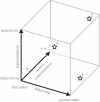Metacognition: computation, biology and function
- PMID: 22492746
- PMCID: PMC3318771
- DOI: 10.1098/rstb.2012.0021
Metacognition: computation, biology and function
Abstract
Many complex systems maintain a self-referential check and balance. In animals, such reflective monitoring and control processes have been grouped under the rubric of metacognition. In this introductory article to a Theme Issue on metacognition, we review recent and rapidly progressing developments from neuroscience, cognitive psychology, computer science and philosophy of mind. While each of these areas is represented in detail by individual contributions to the volume, we take this opportunity to draw links between disciplines, and highlight areas where further integration is needed. Specifically, we cover the definition, measurement, neurobiology and possible functions of metacognition, and assess the relationship between metacognition and consciousness. We propose a framework in which level of representation, order of behaviour and access consciousness are orthogonal dimensions of the conceptual landscape.
Figures

References
-
- Nelson T. O., Narens L. 1990. Metamemory: a theoretical framework and new findings. Psychol. Learn. Motiv. Adv. Res. Theory 26, 125–17310.1016/S0079-7421(08)60053-5 (doi:10.1016/S0079-7421(08)60053-5) - DOI - DOI
-
- Tulving E., Madigan S. A. 1970. Memory and verbal learning. Ann. Rev. Psychol. 21, 437–48410.1146/annurev.ps.21.020170.002253 (doi:10.1146/annurev.ps.21.020170.002253) - DOI - DOI
-
- Metcalfe J. 1996. Metacognition: knowing about knowing. Cambridge, MA: MIT Press
-
- Dunlosky J., Bjork R. A. 2008. Handbook of metamemory and memory, 1st edn East Sussex, UK: Psychology Press
-
- Koriat A. 2007. Metacognition and consciousness. In The Cambridge handbook of consciousness (eds Zelazo P. D., Moscovitch M., Thompson E.), pp. 289–325 Cambridge, UK: Cambridge University Press
Publication types
MeSH terms
Grants and funding
LinkOut - more resources
Full Text Sources
Medical

